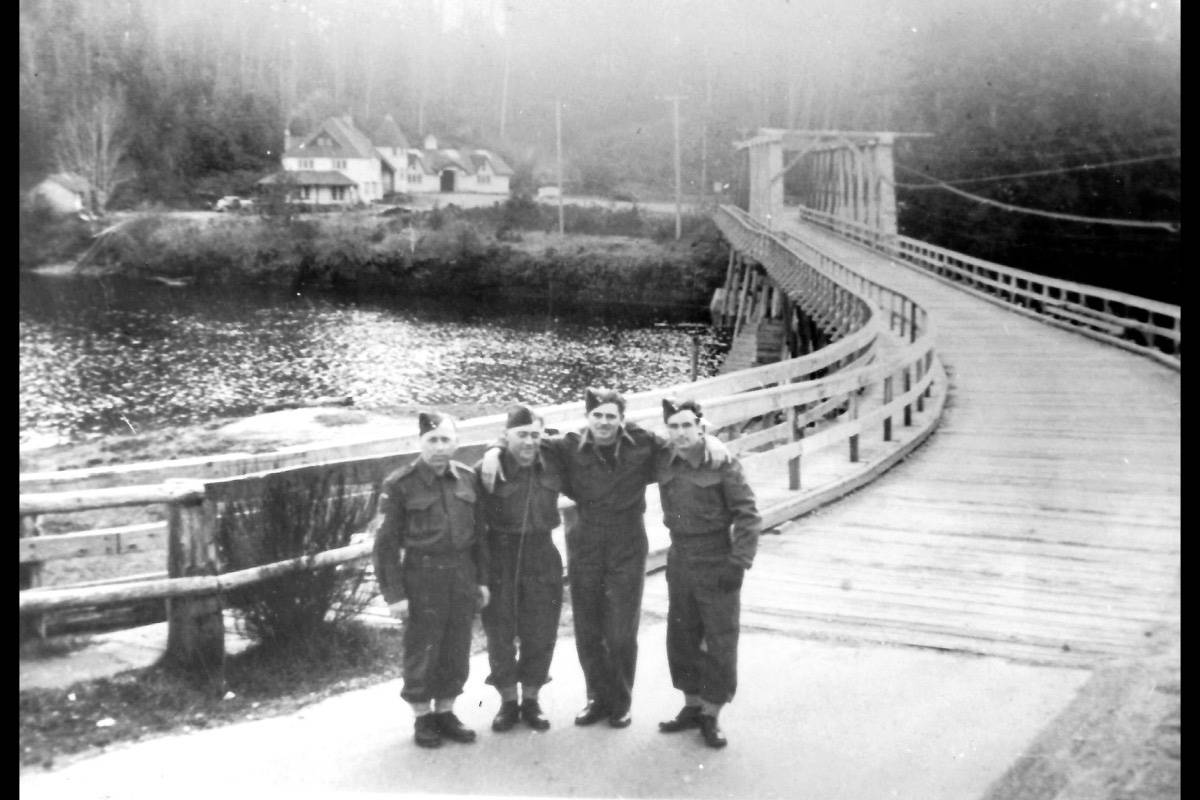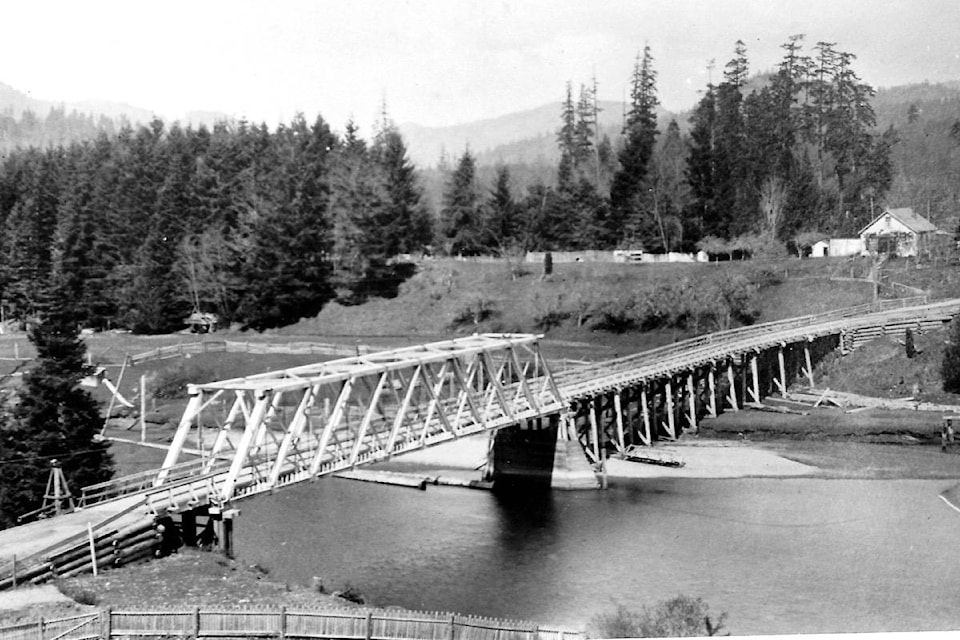Half a century ago the bridge that we use to cross the Sooke River was installed with great ceremony. A bronze plaque is inscribed “B. C. Department of Highways, 1967,” and lists Hon. P.A. Gaglardi and other dignitaries.
This bridge, of course, has had several predecessors.
In 1872 Michael Muir was awarded the contract to build the first bridge crossing, his $1,600 bid accepted.
We don’t have an image of Muir’s bridge, but we do know that before 1872, crossings were undertaken by canoes, rafts, rowboats and sails. Chief Kwaq a Yuk (Chief Cap’n Jack) of the T’Sou-kes was often called upon to ferry people across.
A bridge photo dated 1900 given to the museum by the J.H. Todd family is clearly not the original Muir bridge built for $1,600, so we can call that one bridge No. 2.
An account written by Marguerite West years ago describes a flood in 1896 which wreaked havoc and tragedy in the river; perhaps the Michael Muir bridge lasted until that time. Perhaps this was the same flood that caused the William Phillips family to move their house from the river’s edge to higher ground.
We know that in 1921 another new timber bridge was constructed, from two accounts: Kathleen Wright (think Wright Road) had started a Girl Guide company in Sooke that year, and had invited the Girl Guide commissioner in Victoria to perform the inauguration ceremony.
When the commissioner arrived, the bridge was out, and Guide captain Wright had to ask the T’Sou-kes to ferry her across the river by canoe.
The other story relating to the new bridge in 1921 came from Victoria Donaldson Clay, (think Donaldson Island/Secretary Island) who met a fellow working on the bridge construction, William Clay, and before long became his bride. So the 1921 bridge would be No. 3.
Public Works records show that $31,320.79 was expended here.
Doug MacFarlane tells us that in the mid-1930s, another enormous flood brought several buildings down the river, which hit the bridge pilings on their tumultuous journey to the sea.
It is believed that repairs kept the bridge functional.
Walking across the bridge every day on our way to Sooke Superior School, the youngsters from Saseenos and Milne’s Landing, like myself, knew the bridge well during the war years, and some of us were on hand to watch when that bridge was dynamited by the province in 1946, after bridge No. 4 had been built to take its place.
Museum staff have been told that Jim Ward, who ran the Sooke River Hotel at the time, was nearly struck by a bolt that flew through his window from the explosion.
So the 1946 bridge lasted until 1967, when the steel bridge we drive across nowadays was structured in place, making bridge No. 5 (we think).
Bridge speculation now exists, of course: will there be a second crossing? Will there be another lane? What will the years ahead bring?
Whatever is ahead, probably nothing could beat the drama of the year 1990, when another mighty flood hit the river in a rush.
George Pedneault was one of those most dramatically affected. His herd of Hereford cattle was pastured at Meota and at the Helme place, way up the Sooke River.
The rushing torrents brought seven of the animals downstream, where one cow was found at the MacFarlane place, one on the museum lawn, one stranded on a sandbar in the swirling water at the river mouth, and George finally located several on the East Sooke shoreline.
•••
Elida Peers is the historian of Sooke Region Museum.

